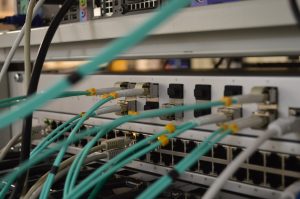The BDDCI.sys Blue Screen of Death (BSOD) error is a common yet frustrating issue for many Windows users. This error typically relates to driver conflicts, particularly concerning Broadcom network adapters. When Windows encounters a serious issue involving BDDCI.sys, it triggers a system crash accompanied by a stop code, leaving users scrambling for a solution. Fortunately, there are multiple ways to fix or mitigate this error, ensuring system stability and preventing future crashes.
What Causes the BDDCI.sys Error?
The BDDCI.sys file is associated with third-party drivers like Broadcom’s Device Description Interface used in networking hardware. Errors with this file often originate from:
- Outdated or corrupted network drivers
- Conflicts with new software or Windows updates
- Malware interference
- Hardware compatibility issues

How to Fix the BDDCI.sys Blue Screen Error
1. Boot Into Safe Mode
Start by booting your system into Safe Mode to disable non-essential services and allow troubleshooting.
- Restart your PC and press F8 (or Shift + F8 depending on your version) before Windows loads.
- Select Safe Mode with Networking.
This allows the system to boot with minimal functions, which can prevent the BSOD from recurring temporarily while you perform repairs.
2. Update or Roll Back the Network Driver
Since BDDCI.sys is linked to Broadcom network drivers, ensuring your drivers are up to date is crucial.
- Open Device Manager by right-clicking the Start Button.
- Expand the Network adapters section.
- Right-click the valid Broadcom adapter and select Update driver.
- Choose Search automatically for drivers.
If the issue began after a recent update, consider rolling back the driver instead:
- Right-click the adapter in Device Manager.
- Click Properties, go to the Driver tab and choose Roll Back Driver.
3. Uninstall Conflicting Software
Recently installed applications can interfere with system files including BDDCI.sys.
To uninstall:
- Go to Control Panel > Programs and Features.
- Sort by “Installed On” and remove any suspicious or unnecessary recent installations.
4. Run System File Checker and DISM
Corrupt system files may also be the culprit. Use Windows built-in utilities to scan and repair files.
sfc /scannow
DISM /Online /Cleanup-Image /RestoreHealthRun these commands one at a time in an elevated Command Prompt (run as administrator).
5. Perform a System Restore
If the problem persists, revert your system to a restore point before the issue started.
- Type System Restore into the Windows search bar.
- Select a restore point from a date when your system worked correctly.
This undoes recent changes without affecting personal files.
6. Check for Malware and Run a Full Scan
Sometimes, malware disguises itself as legitimate system files, including BDDCI.sys.
- Run a full antivirus scan.
- Use tools like Malwarebytes for an in-depth scan.

Preventing Future BDDCI.sys Errors
To minimize the chances of experiencing this BSOD again, users should:
- Keep all system drivers updated regularly.
- Install Windows updates promptly.
- Use reliable antivirus software.
- Avoid installing software from untrusted sources.
FAQ
-
What is BDDCI.sys in Windows?
BDDCI.sys is a system driver file associated with Broadcom networking hardware. It plays a role in device communication with Windows. -
Can I delete BDDCI.sys to fix the problem?
No. Deleting system driver files can lead to more severe problems. It’s better to update or reinstall the corresponding driver. -
Why does BDDCI.sys keep causing my system to crash?
The crash is usually due to corrupt, outdated, or incompatible network drivers or software conflicts. -
Is BDDCI.sys a virus?
Not inherently. However, malware can disguise itself as BDDCI.sys. Always verify its legitimacy by scanning with antivirus software. -
What if none of these solutions work?
If all else fails, consider resetting Windows or performing a clean reinstall. Backup your data before doing so.
Fixing BDDCI.sys BSOD errors may require patience, but with these comprehensive steps, users can resolve the issue and return to a stable computing experience.






